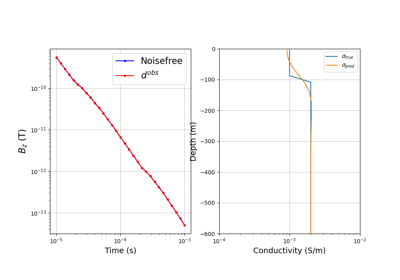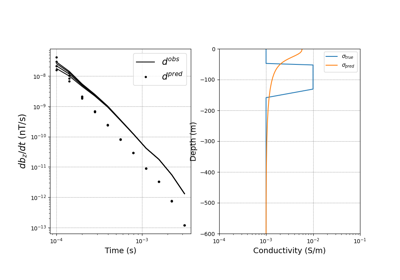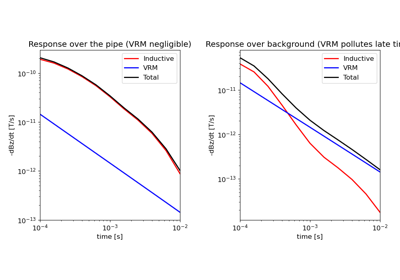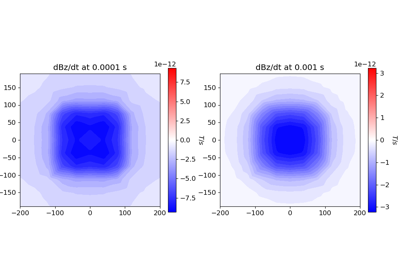SimPEG.electromagnetics.time_domain.simulation.BaseTDEMSimulation#
- class SimPEG.electromagnetics.time_domain.simulation.BaseTDEMSimulation(mesh, survey=None, dt_threshold=1e-08, **kwargs)[source]#
Bases:
SimPEG.simulation.BaseTimeSimulation,SimPEG.electromagnetics.base.BaseEMSimulationWe start with the first order form of Maxwell’s equations, eliminate and solve the second order form. For the time discretization, we use backward Euler.
Attributes
A list of solver objects to clean when the model is updated
The threshold used to determine if a previous matrix factor can be reused.
The survey for the simulation Returns ------- SimPEG.electromagnetics.time_domain.survey.Survey
Adcinv
Methods
Jtvec(m, v[, f])Jvec computes the adjoint of the sensitivity times a vector
Jvec(m, v[, f])Jvec computes the sensitivity times a vector
fields(m)Solve the forward problem for the fields.
Ask the sources for initial fields
getSourceTerm(tInd)Assemble the source term.
getInitialFieldsDeriv
Galleries and Tutorials using SimPEG.electromagnetics.time_domain.simulation.BaseTDEMSimulation#

Time-domain CSEM for a resistive cube in a deep marine setting

Heagy et al., 2017 1D RESOLVE and SkyTEM Bookpurnong Inversions

3D Forward Simulation for Transient Response on a Cylindrical Mesh





